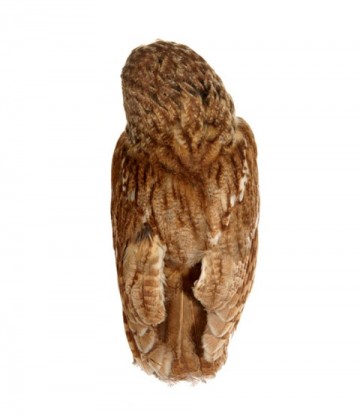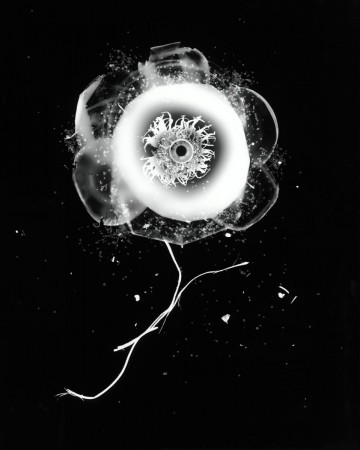Erika Babatz |
Sabrina Friio
PORTRAITS
March 16, 2012 – April 28, 2012
‘Portrait’ derives from the Latin word ‘protrahere’ (extract) and proves insightful Thursday March 15, 2012 7pm on reflections. Although Babatz and Friio differ in their methods of operating and result, they have the urge in common to capture the identity and individuality and as such the elementary of the object. Babatz unites in aesthetically beautiful images what was wasted by the glamour and illusion during the fat stock market years. She literally screens the objects and pulls the invisible to the photographic surface. Friio on the other hand has ordinary animal trophies from our urban settlements posing for her. They demonstrate how beauty of creation can be also found in their form and appearance.
The proximity to the art form of the still life is not unintentional. During the baroque period symbols of vanity and perishability were arranged and displayed along with insignia of power and wealth. Amazingly this art form had its climax during the life threatening periods of the 17th century. Since then still life has lost its importance for the beaux-arts but still remains in use by contemporary artists. The term ‘Memento mori’ (from ‘Memento moriendum esse’: remember you will die) as a concept can be linked to Andy Warhol, Damien Hirst or John Currin. Striking wealth and ignorance far away from a humble grip on reality.
Erika Babatz investigates in her work the evidence and trash of our civilisation. Her early series ‘Vanitas of disposal’ shows carefully arranged still lives of waste such as eggshells, computer devices or pieces of packaging. The objects wrapped in delicate white light appear pure and safe from the perishable. In the series ‘Suenos Rotos’ she collected and presented broken and disposed soccer balls as a symbol of broken dreams. In ‘Bodegones berlineses’ Babatz screened the findings of composed flower arrangemends from another world.
Portraits without a face – not the first time for Friio. Just as in her early work ‘Identité’ she displays personalities without a face: a cat, a hen, a rat and a mole. She concentrates on what remains: bodily beauty. Her new Video ‘Portraits’ stands in contrast to it: quick sequences of monochromatic portraits are flashing on the screen. Friio consciously provokes the eye and evokes blurring, interfering images. In digital photography this is called ‘image noise’.
The proximity to the art form of the still life is not unintentional. During the baroque period symbols of vanity and perishability were arranged and displayed along with insignia of power and wealth. Amazingly this art form had its climax during the life threatening periods of the 17th century. Since then still life has lost its importance for the beaux-arts but still remains in use by contemporary artists. The term ‘Memento mori’ (from ‘Memento moriendum esse’: remember you will die) as a concept can be linked to Andy Warhol, Damien Hirst or John Currin. Striking wealth and ignorance far away from a humble grip on reality.
Erika Babatz investigates in her work the evidence and trash of our civilisation. Her early series ‘Vanitas of disposal’ shows carefully arranged still lives of waste such as eggshells, computer devices or pieces of packaging. The objects wrapped in delicate white light appear pure and safe from the perishable. In the series ‘Suenos Rotos’ she collected and presented broken and disposed soccer balls as a symbol of broken dreams. In ‘Bodegones berlineses’ Babatz screened the findings of composed flower arrangemends from another world.
Portraits without a face – not the first time for Friio. Just as in her early work ‘Identité’ she displays personalities without a face: a cat, a hen, a rat and a mole. She concentrates on what remains: bodily beauty. Her new Video ‘Portraits’ stands in contrast to it: quick sequences of monochromatic portraits are flashing on the screen. Friio consciously provokes the eye and evokes blurring, interfering images. In digital photography this is called ‘image noise’.


